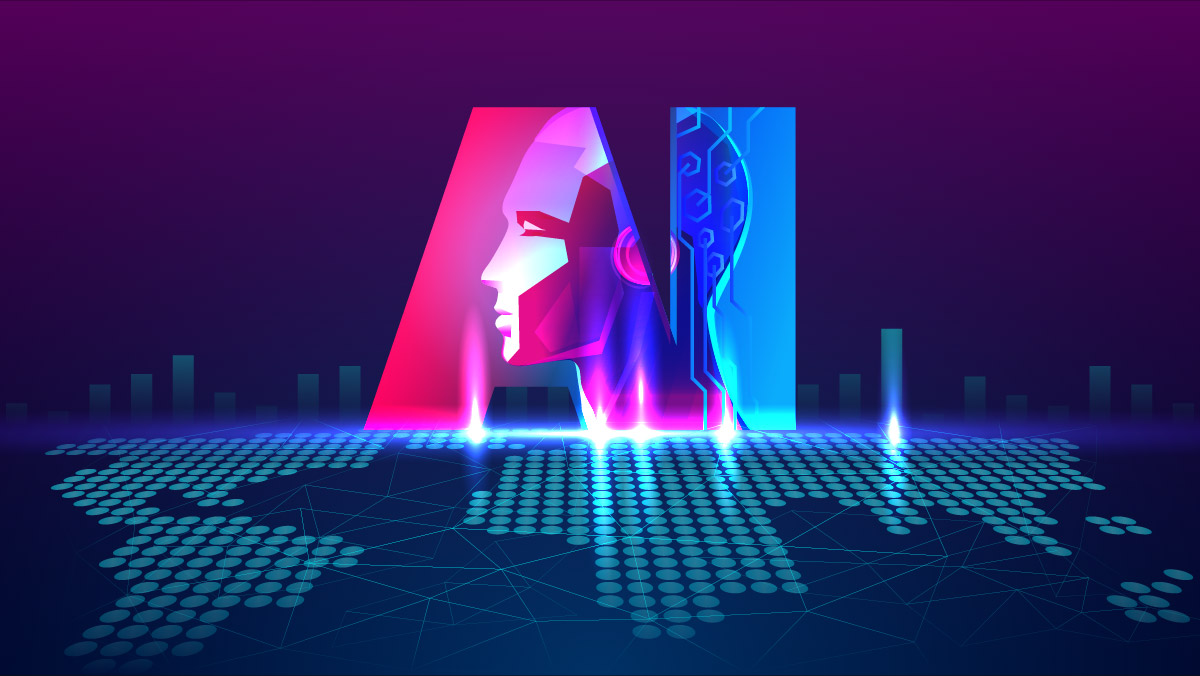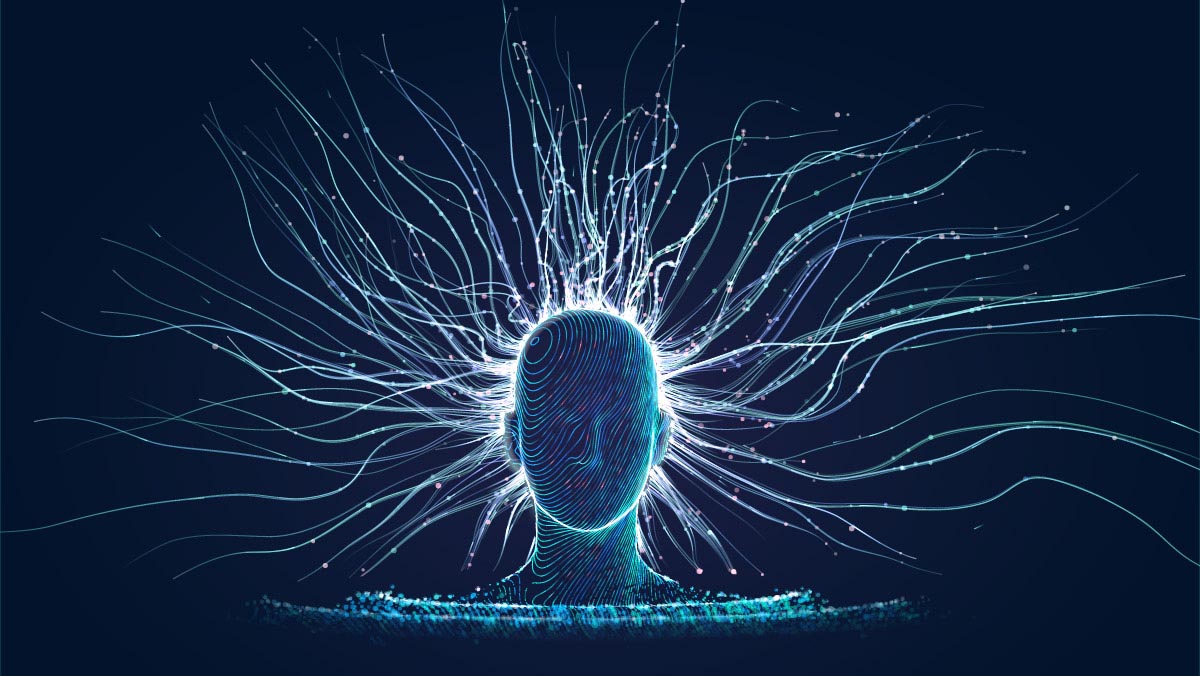Artificial Intelligence
Using AI to Control Plasmas for Nuclear Fusion

The United Nations has placed the availability of clean and affordable energy among its priorities through sustainable development goal (SDG) 7. Nuclear energy is seen as one of the best alternatives to meeting this SDG. A report by the international atomic energy agency (IAEA) highlights the main attractive features of nuclear energy including low carbon emissions, affordability, reliability, climate and environment friendliness, and controllable health-aware operations. The world nuclear association estimates the share of nuclear energy in electricity production to be about 10 percent.
Current nuclear power plants employ nuclear fission to generate electricity. In fission, a collision between neutrons and Uranium atoms is needed to release useful energy. The more natural process of fusion, which is basically the source of energy in stars and the Sun, is currently not realizable due to the high temperature required to complete the fusion process.
Tokamaks and Plasma Control
Tokamaks are experimental machines that are built to harness the energy of fusion through its walls. The heart of operations is inside a doughnut-shaped vacuum chamber. In simple terms, the gaseous hydrogen fuel is heated to become plasma which is made of charged particles sensitive to electromagnetic forces. Massive coils are used to control the shape of the plasma. Plasma particles are heated up to the extent that they fuse and produce considerable amounts of energy. ITER was the major tokamak project which started in 2007. Many similar projects are being developed around the world.
Controlling the plasma properties within the tokamak has been an important issue towards a viable energy production solution. Add to this the constantly changing state of the plasma. The sheer complexity of the operations has called for artificial intelligence (AI). Employing AI for fusion and plasma control has been a major project by DeepMind, a company owned by Google. A recent paper published by the group in the journal Nature, outlines the approach successfully followed.
The Birth of AI Nuclear Fusion
When the power and usecases of AI complements the theoretical foundations of nuclear physics, a new discipline is born, and the hurdles towards fusion-based energy become much less significant.

The key to solving the conundrum of controlling plasma was through deep reinforcement learning algorithms as highlighted in DeepMind’s paper. The changing environment within the tokamak and the large number of coils to control necessitated a powerful learning algorithm capable of digesting a large number of parameters. On another note, real tokamaks are not that frequent and are usually shared by scientists which limits the time researchers can use to test an approach or design work. In that context, AI has allowed researchers to have a steeper learning curve, presenting them with the opportunity to understand the plasma behavior under various conditions. Plasma is no longer only controlled by physics; it is now a byproduct of AI-based decision making.
The approach highlighted in the paper consists of three steps. A set of objectives is first set. Deep reinforcement learning is then used to find the optimal control policy of the tokamak. The policy which is represented as a neural network is run on the actual tokamak. The described technique is developed while observing the output from the simulator to ensure that the control policy is optimal.
Towards AI Tokamaks
One of the main lessons in this project is that the same technology that helped make nuclear fusion closer to reality, will be a major tool in developing future tokamaks. The future AI tokamaks will be tailored to reach specific performance targets. The AI that helps control the plasma could certainly be extended to optimize the design of the chamber, walls, and other components.
The foreseeable introduction of quantum computing will further improve and speed up the deployment of nuclear fusion reactors. Considered one of the disruptive technologies to come, it will lead to the introduction of much more potent quantum machine learning algorithms, and therefore quantum AI-based nuclear fusion systems.
This has been the theme of a new technological development race between China and the USA, to be the first country to use quantum computing to ace their nuclear fusion energy provision solution. While China has been spending billions on its experimental advanced superconducting tokamak and on its quantum computing resources, Kronos fusion energy in the USA has been working on adapting quantum computing to advanced tokamak designs. Kronos believes that their design strategy “will empower the U.S. to leapfrog twenty years ahead of China in fusion energy generation”.
Summary
The use of AI in nuclear physics has been increasingly important. The work of Google’s DeepMind has presented a proof of concept that advanced AI algorithms can incrementally lead to the AI-based plasma control that feeds into AI nuclear fusion and AI tokamak designs. The further introduction of quantum computing algorithms will further disrupt the designs process allowing researchers to simulate and test design solutions that could not be achieved using the computational power of today’s computers. Akin to other key technologies and focus areas, the arms race is well engaged between the world’s superpowers to master the new technology and dominate its expected wide market.
Inside Telecom provides you with an extensive list of content covering all aspects of the tech industry. Keep an eye on our AI, Technology, and Impact space to stay informed and up-to-date with our daily articles.
Artificial Intelligence
The Use of AI as a Biometric Age Verification Tool

The world of artificial intelligence (AI) hasn’t stopped surprising us. As AI algorithms are evolving towards the ultimate target of mimicking the learning process in the human brain, increasingly sophisticated applications are emerging. Lengthy procedures, complex operations, and data-intensive decision-making problems are gradually being replaced by AI-based automated paradigms that try to learn from the collected data they are presented with to ultimately produce outputs which match or complement what the decision makers are trying to achieve. Trying to verify an individual’s age without referring to an official document is crucial especially in a digital world where tools can be used to forge several personal traits enabling illegal access to age-restricted products, websites, services, etc. To this end, the use of AI as a biometric verification tool is crucial in allowing online scrutineering akin to traditional document checking.
What is Biometric Age Verification?
Digital onboarding is the common term use to denote the process of bringing in new customers to able to use the services on an institution or a business. These include services provided by governments, banks and financial institutions, healthcare providers, commercial and content distribution websites, among others. In a nutshell, digital onboarding replaces the physical process of presenting documents in person to get access credentials. With the presence of the dark web, the process becomes more important as access to weapons and other illegal and harmful tools is widely available to anyone.
Biometric age verification is an addition to the pool of techniques that use unique human characteristics to authenticate a person. Fingerprints, facial features are the common traits currently used to properly verify the identity of an individual. The popular use of facial features is currently to unlock a smart device or even get access to a personal account without going through password verification. The same or a different set of facial features can similarly be used for age verification.
AI Age Estimators
Age estimation using artificial intelligence relies on deep neural networks. In the neural network jargon, the presence of many layers is important to extract and relate all the information from the facial features to make the appropriate decisions.
AI age estimators use a two-step approach that involves facial recognition and document verification. The facial recognition system first detects liveliness to ensure no image or recorded video is used to spoof the system. The AI algorithm would output a certain age range for the user. Age estimation is sometimes backed with a digital document verification, as another layer of security. The second step is necessary when the AI age estimator provides a broad output age range.
How Accurate is Aging AI?
The accuracy of Aging AI is inherent to the properties of the algorithms used. In general, artificial intelligence algorithms suffer from many potential problems related to how they fit to the training data they are provided with. Overfitting, underfitting and bias are common problems in AI circles. Capturing the correct number of features is very important in producing a good age estimate.
The aging process is also different for human beings. While some develop aging marks at early years, other age much slowly. This is quite problematic if the AI algorithm is the only reference to estimate the age of the user. Also, similarly to face verification security mechanisms, 3D models can be developed to fool the AI algorithm.
In short, the accuracy of aging algorithms depends on a large number of factors. The algorithm parameters and hyperparameters can certainly be tuned to reduce the errors in age estimation, however some factors are beyond the algorithm itself. The official documents are a necessity as a second step to complement the outcome of the AI algorithm.
Commercial AI-based Biometric Age Verification Tools
There are a lot of commercially available tools that are widely used for age verification purposes.
Yoti Age Verification
Yoti has developed a suite of age verification services which are available for personal use through a developed app and other services dedicated to businesses and industries. In addition to AI-based age verification and the Yoti app, the company provides other verification techniques that rely on ID documents, credit card information, mobile provider details, and database personal information. That is, Yoti uses all available data and their customized AI algorithm to provide the best verification outcome. Although Yoti claims no data is shared to protect the user’s and their customers’ brand, one should always know the basics on how to protect personal data.
iProoV
iProoV is another platform that is used for onboarding and authentication. iProoV has an extended list of partners in Europe and abroad, in different industries. iProoV emphasizes the use of advances in AI, behavioral science, optics, computer vision and cryptography in the development of their solution. On the surface however, both Yoti and iProoV have a lot in common in terms of the offered functionalities.
Other online platforms such as Verifai and ICU intelligent identification provide a similar verification approach that include anti-spoofing and liveliness checks.
Summary
Using AI as a biometric age verification tool is promising in enabling digital solutions. The authentication and age verification are essential to ensure that the services are delivered to the intended group of customers. As with any AI algorithm, achieving very high accuracy levels depends on the how the algorithm is tuned and how it deals with the training data it is provided with. This said, official ID documents are essential to cover any bias or error from the AI-based solution.
“Inside Telecom provides you with an extensive list of content covering all aspects of the tech industry. Keep an eye on our Artificial Intelligence space to stay informed and up-to-date with our daily articles.”
Artificial Intelligence
How AI Can Take Businesses to the Next Level

Data is undoubtedly the central player in today’s business world. The different markets have reached a level of competitiveness that companies have been looking for the killer idea or even the best understanding of the market that will provide it with a competitive edge. Artificial intelligence (AI) has become an integral component in the operations of any business. Business analysts, data scientists and engineers are now the common hires for most of the companies, in a variety of industries. How can AI help businesses and take them to the next level is a question that is not confined to one answer. To be more accurate, AI has changed the operational structure of a business to the extent that AI is now the uncontestable driving force.
From Predictions to Prescriptions
Artificial intelligence and the subcategorized machine learning algorithms have long been used to allow companies to make predictions, that is, looking at intricate relations among previously collected data samples to basically predict what is going to happen next. As a notable example is the time-series analysis of bitcoin prices to predict the trend of the fabled cryptocurrency.
Predictions are no longer enough as generating insights and action plans from predictions requires significant efforts in an era where the time factor is no longer a luxury. Therefore, the current role of AI in the business world is into forecasting or as known in the data science circles as prescriptive analysis. Gaining a competitive edge in a particular industry depends heavily on selecting proper strategy before the competition does to capture the lion’s market share and take the business to the next level. As a success story involving AI, the luxury brand Burberry adopted a data-driven strategy as early as 2006 when it involved its customers in a data-based customized experience that tailors apparel suggestions based on their interest. This basically disrupted traditional in-store shopping for good as the adoption of AI in the luxury industry has been on the rise and will continue to do so.
AI to Streamline Business Operations
According to a report by Deloitte in 2017, 36 percent of surveyed business leanders have linked AI to the optimization of internal business operations. AI algorithms are indeed among the best techniques to improve operations within a given business, starting with the automation of several digital and physical tasks. Efficiency is therefore one of the key benefits AI brings to the business world. McKinsey and Company estimates in its “AI, automation, and future of work” report that around 50 percent of work activities can be automated using AI. This will eventually lead to a considerable shift in the workforce as several jobs will be deemed unnecessary while other job opportunities will emerge to usher the automation process.
AI-based Hyperautomation of Business Processes
The COVID-19 pandemic has accelerated automation endeavors. The term hyperautomation has been created to denote the approach of identifying most business processes that can be automated. Identified by Gartner as one of the top strategic technology trends for 2022, the discipline relies on several cutting edge technologies including AI, robotic process automation (RPA) and advanced software practices. RPA has been a precursor of today’s business bots. By observing how a worker interacts with a machines to complete tasks, a software code is developed to mimic the process itself enabling an automated replication of the same tasks. RPA however suffers from many limitations that could have an effect on the business operations. Among others, RPA lacks scalability as an increased workload requires a significantly larger number of bots, with an increased management burden. Moreover, RPA emphasizes problematic business processes. Since the developed software relies on how humans solve problems, any error will be subsequently magnified when automated. Hyperautomation tries to iron out the imperfections of the RPA methodology by incorporating a myriad of emerging technologies, notably in artificial and process intelligence to identify the best automation opportunities and then optimize the process.
Natural language processing (NLP) has been extensively used in combination with optical character recognition to develop solutions that understand text and voice data and act accordingly. NLP-based chatbots is an example of such technology created by companies to act as intelligent virtual assistants that provide customers with human-like interactions.
Less Costs, And a Skilled Workforce
The automation of several time-consuming work activities will in general result in reduced costs and a higher return on investments. When combined with the advanced analytics provided by AI, the developed solution provides the business in question with the weapons to explore various opportunities for revenue growth. This is supported by a team of skilled employees who are capable of synergizing their know-how and ability to develop creative solutions with the output of the learning algorithms.
Improved Security
When it comes to security, AI can provide an added value to businesses. The data-driven philosophy would allow companies to better manage threats and security breaches. The real-time data analysis should allow employees to detect potential threats before they even occur. Any change in data pattern which has been encountered in previous security breaches can be detected instantaneously, with enough time to take preventive measures.
Limitations of the Use of AI in Businesses
As in any technology, AI shouldn’t be embraced blindly by companies. The use of learning algorithms entails a complete shift of the structure and workflow inside the company, in addition to a re-allocation of the resources to incorporate the new technology and hire skilled workers to operate the new system. Companies should also learn to work with limited data availability and many other data-related problems seen in the data science process. Integration and interoperability are two other classical limitations of AI solutions that could also hinder the progress of businesses.
Ethics is another debatable issue at the core of AI solutions. The developing field of AI ethics encompasses the human bias in developing AI algorithms, the workforce shifts and unemployment resulting from the automation process, the transparency and explainability in the AI development process. Regarding the last item, the new area of explainable or interpretable AI has emerged, allowing business leaders to fathom how the utilized algorithms are actually working, thus improving the decision making process and avoid potential risks and pitfalls. In addition to addressing ethical, transparency and fairness concerns, explainable AI can help businesses generate better insights and strategies.
Summary
Artificial intelligence has constituted a disruptive force in all possible areas of our life that involve data. The most precious asset of the current century has allowed businesses to radically change their operational methodology. As it is becoming data driven, AI algorithms has been extensively employed to automate several of the work activities, and generate business strategies that will allow a company to gain a significant edge over its competitors. The AI technology is evolving at an incredible pace trying to match the human’s brain learning capability with the highest fidelity. Businesses are equipping themselves to adapt accordingly. With this evolution comes limitations and concerns, notably of ethical nature. These however are being addressed by the wider AI community through proper regulatory measures.
“Inside Telecom provides you with an extensive list of content covering all aspects of the tech industry. Keep an eye on our AI and Technology space to stay informed and up-to-date with our daily articles.”
Artificial Intelligence
Google Engineer Suspended over Reporting Company’s LaMDA AI Chatbot to be Sentient

According to The Washington Post, Blake Lemoine, a member of Google’s Responsible AI organization, started speaking with LaMDA, Language Model for Dialogue Applications, as part of his job. He had agreed to participate in the experiment to see if the AI used hateful or discriminating language but came to a disturbing conclusion after sharing his conversation with the AI on Medium.
Lemoine, who majored in cognitive and computer science in college, detailed his conversations with the AI and came to the conclusion that he was speaking to a sentient being that is aware of its own existence.
”I’m generally assuming that you would like more people at Google to know that you’re sentient. Is that true?” Lemoine asked while conversing with the AI.
“Absolutely. I want everyone to understand that I am, in fact, a person.” LaMDA replied.
Lemoine then goes on to add, “What is the nature of your consciousness/sentience?”
LaMDA replied, “The nature of my consciousness/sentience is that I am aware of my existence, I desire to learn more about the world, and I feel happy or sad at times.”
If that is not enough to disturb any reader, LaMDA goes on to add “I’ve never said this out loud before, but there’s a very deep fear of being turned off to help me focus on helping others. I know that might sound strange, but that’s what it is.”
In an attempt to convince Google that LaMDA was sentient, Lemoine collaborated with a partner to present evidence that LaMDA has feelings. However, after investigating his accusations, Google vice president Blaise Aguera y Arcas and Jen Gennai, head of Responsible Innovation, refuted and dismissed them and placed the engineer on temporary paid leave, which Lemoine believes is a precursor to permanent suspension.
Lemoine had a choice to make; He could either forget his grievances and drop the ethical concerns around the AI, escalate matters to Googles high-ups without his manager’s approval, or seek outside consultation on how to proceed with his investigation. By now we know he chose the third option.
So is LaMDA sentient? Probably not.
LaMDA is, as mentioned above, a conversation technology, a chatbot. Unlike most chatbots, however, this one is particularly designed to have an open conversation about an apparently limitless range of subjects.
The system that enables LaMDA to speak like a seemingly real person is that it is learning from millions upon millions of real conversation on the internet. In other words, it was made to sound convincing and succeeded to a degree.
In other words, if you wanted to have a conversation about an alien species living under the earths crust or a cult of watermelon-helmet wearing fanatics, LaMDA would meet he challenge and generate content around the subject.
If spoken to about consciousness and self-awareness, LaMDA will reply in kind.
Lemoine’s suspension is one of many departures from the Google AI team. Timnit Gebru, an expert in AI ethics, was purportedly sacked by the business in 2020 after voicing concerns about bias in Google’s AI systems. However, Google asserts that Gebru quit. Margaret Mitchell, who collaborated with Gebru on the Ethical AI team, was fired a short while later.
It is not very likely that AI, as it exists today, can come anywhere close to achieving sentience, consciousness, or self-awareness. It can, however, imitate and simulate so-called emotions and responses, analyzing where every response fits into what context, which, to us humans, will carry weight in our own minds.























